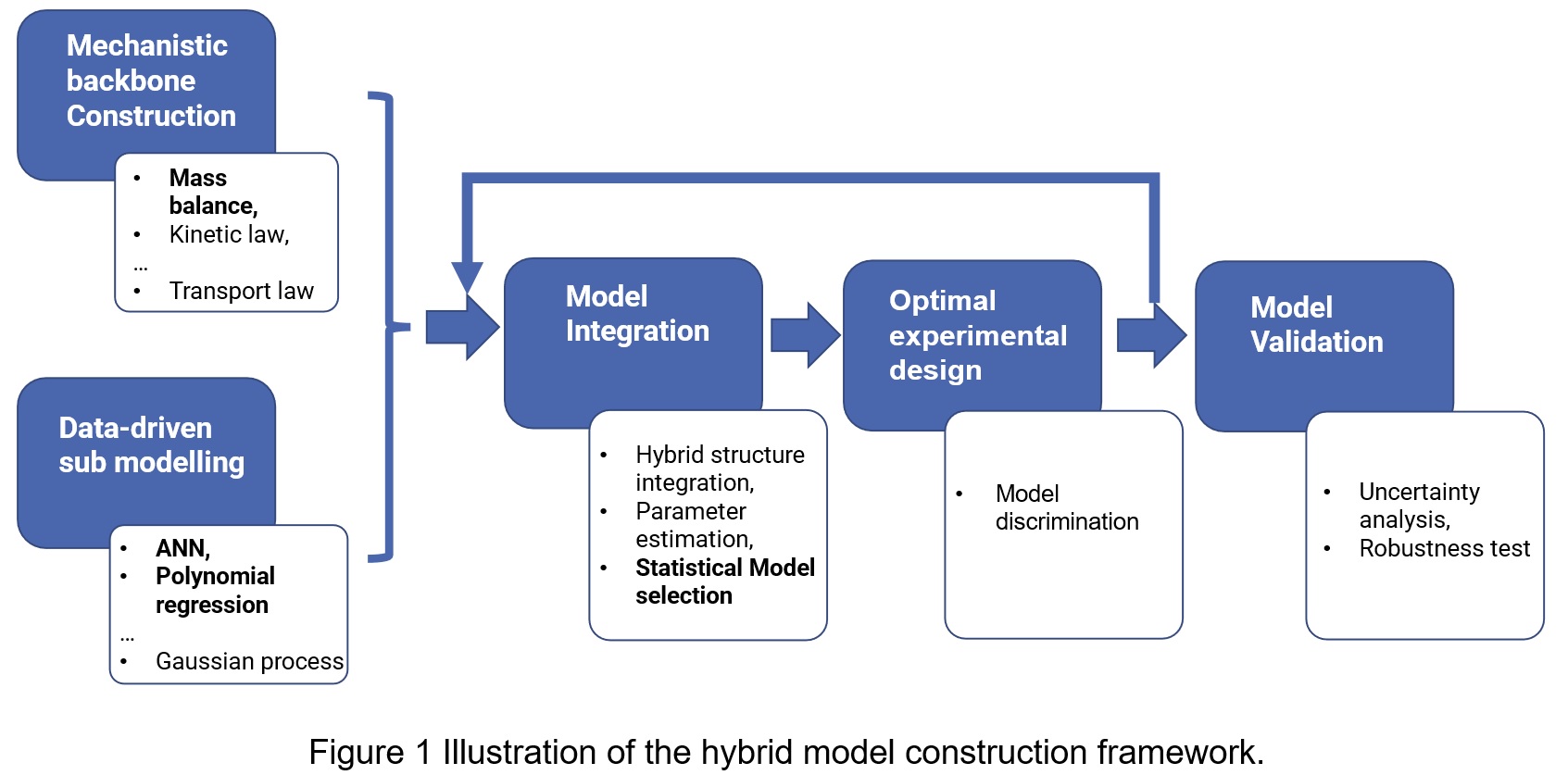(458e) A Dynamic Hybrid Modeling Framework for Bioprocesses
AIChE Annual Meeting
2023
2023 AIChE Annual Meeting
Topical Conference: Next-Gen Manufacturing
Next-Gen Manufacturing in Pharma, Food, and Bioprocessing I
Wednesday, November 8, 2023 - 1:46pm to 2:05pm
This work introduces a novel framework for constructing hybrid models, which integrates a mechanistic backbone with data-driven components. The mechanistic backbone is informed by prior knowledge of biological mechanisms, while the data-driven components are incorporated through statistical model selection methods to find the ‘correct’ hybrid model that balances the fitting accuracy and extrapolation ability. Statistical model selection methods such as the Bayesian Information Criterion (BIC)[3], the Akaike Information Criterion (AIC)[4], and the Hannan Quinn Criterion (HQC)[5] are embedded into the framework. When the statistical methods identify different “correct†model structures, a further optimal experimental design is completed to discriminate between the selected structures.
Two bioprocess case studies are considered in this work with different system complexity. Firstly, the proposed framework is applied in a simple biomass cultivation case study. Two hybrid models have been constructed, one by applying polynomial regression (hybrid–polynomial) and the artificial neural networks (hybrid–ANNs) respectively. The results demonstrate the robustness of our framework against high noise.
The framework is further tested on a microalgae cultivation process for biodiesel production[6]. Following the same procedure, the mechanistic structure of the hybrid model is designed based on mass balances of state variables. The influence of light attenuation, substrate and nitrate consumption on the microalgae growth rate is modeled through polynomial regression and ANNs. Finally, the extrapolation capability of the statistically selected hybrid model is tested by varying the initial conditions of state variables and incident light intensity by ± 20% to stress-test the framework. It is found that both the hybrid–polynomial and the hybrid–ANNs can simulate the microalgae system with good extrapolation ability and avoid complex mechanistical expression of biomechanisms at the same time. One observation of this work is that the selected information criteria sometimes select different optimal model structures. This is not surprising due to their different statistical derivations. To account for this deviation, a further experimental design optimization is completed to further discriminate between the selected model structures.
In summary, we demonstrate how our proposed hybrid model construction framework can be applied for dynamic modelling for bioprocess. The framework is flexible regarding the system complexity and robust against high measurement noise.
References
[1] M. Von Stosch, R. Oliveira, J. Peres, and S. F. de Azevedo, "Hybrid semi-parametric modeling in process systems engineering: Past, present and future," Computers & Chemical Engineering, vol. 60, pp. 86-101, 2014.
[2] P. Kotidis and C. Kontoravdi, "Harnessing the potential of artificial neural networks for predicting protein glycosylation," Metab Eng Commun, vol. 10, p. e00131, Jun 2020, doi: 10.1016/j.mec.2020.e00131.
[3] A. A. Neath and J. E. Cavanaugh, "The Bayesian information criterion: background, derivation, and applications," Wiley Interdisciplinary Reviews: Computational Statistics, vol. 4, no. 2, pp. 199-203, 2012.
[4] Y. Sakamoto, M. Ishiguro, and G. Kitagawa, "Akaike information criterion statistics," Dordrecht, The Netherlands: D. Reidel, vol. 81, no. 10.5555, p. 26853, 1986.
[5] E. J. Hannan and B. G. Quinn, "The determination of the order of an autoregression," Journal of the Royal Statistical Society: Series B (Methodological), vol. 41, no. 2, pp. 190-195, 1979.
[6] E. A. del Rioâ€Chanona et al., "Dynamic modeling of green algae cultivation in a photobioreactor for sustainable biodiesel production," Biotechnology and bioengineering, vol. 115, no. 2, pp. 359-370, 2018.
